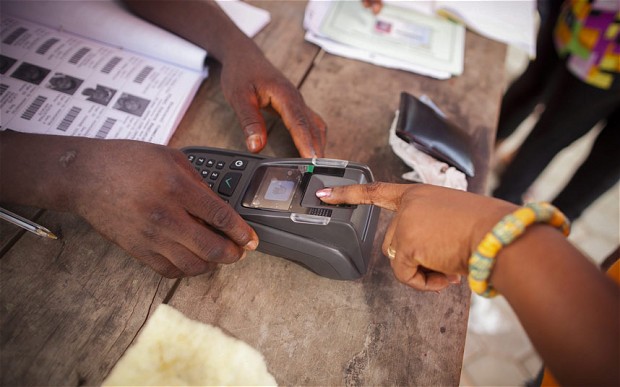The BVD device for elections has a telephone chip and Wi-Fi connectivity that can be accessed remotely. Jean Mensa is it True or False?
I am a citizen
I am the son of a gong-gong beater.
Deep throat sources have confirmed that the New Biometric Verification Devices (BVDs), machines to be used in the December 2020 elections have a Telephone chip (SIM card) slot and Wi-Fi connectivity which can be accessed remotely.
What can a telephone chip and Wi-Fi connectivity do to a Biometric Voting Device (BVD)? Once it has internet connectivity, anybody sitting anywhere within proximity of the Wi-Fi hotspot zone of the BVD can access electoral data and information stored on the device via the telephone chip or SIM card.
This technology gives room to remotely access and manipulate voter’s registration data at a particular polling station that has been pre-programmed and assigned to a specific BVD.
It is highly possible for an IT Expert (Hacker) operating from a remote location to add or remove names and thereby tamper with voter’s registration data and electoral information stored on a BVD of a particular polling station.
IT software developers, vendors, and device manufacturers are all rushing to join the so-called “Internet of Everything”, thus creating new types of products, systems, and devices to make our lives more efficient, convenient and comfortable. Many of these IT systems, software applications and devices employ Wi-Fi technology to link them together, as well as connecting them to wireless hotspot access points that in turn connect to the web and cloud-based intelligence systems.
As a result, many IT system developers and designers, instead of trying to handle the complexity of developing their own wireless systems for their “Internet of Everything” products (applications and solutions), are instead relying and choosing to use pre-certified fully integrated Wi-Fi connectivity solutions to update and enhance their underlying software applications that control the functionality, operability and security of their It information systems and devices. Created specifically to help designers meet these new challenges, these embedded modules and software can be accessed and remotely manipulated through Wi-Fi connectivity systems
In the year 2012, Dr Afari Djan’s Electoral Commission (EC) introduced a “No verification No Vote” policy. The EC in collaboration with the Inter Party Advisory Committee (IPAC) agreed that every registered voter must submit themselves to biometric verification at the polling stations otherwise they would not be allowed to vote. The “No verification No Vote” policy was adopted to ensure that we conduct very credible, free and fair elections during the December 7, 2012 general elections.
Ahead of the December 2020 presidential and parliamentary polls, the NPP said on Monday, August 10, 2020, that it will adopt the same stance on “No verification No Vote” policy – this time because the party was very confident in the new Biometric election management system deployed by the EC.
NPP General Secretary, John Boadu, addressed a press conference in Accra on Monday, August 10, 2020, and said that with the facial recognition functionality that was part of the new technology, it would be impossible for registered voters not to be electronically verified by the biometric verification machines (i.e. BVDs).
John Boadu furthermore said that, “as we move on towards the 2020 general elections, we will be having a lot of IPAC meetings and as such it will be appropriate to push for enforcement of the no verification no vote.”
The NPP General Secretary indicated that the old biometric election management system first deployed in 2012 and 2016, and its accompanying BVD machines were unable to verify voters properly during the 2016 elections, resulting in a high number of registered voters being manually verified on election voting day.
The governing New Patriotic Party (NPP) is very confident in the new biometric voter management solution acquired by the Electoral Commission and hence has revived its 2016 “no verification no vote” stance for the forthcoming December polls.
The question is why weren’t voters verified during the recent Voter Register Exhibition exercise?
Secondly, if the new biometric voter management solution has a reliable facial recognition feature, why do we have to undertake manual verification on voting day?
Manual verification is an option and loophole to introduce multiple voting.
Deep throat sources have confirmed that the EC’s Election Returning Officers will have the power and authority to reset BVD machines during voting on Election Day to confuse political party agents and thereby try to manipulate the electoral process and number of people who may have actually voted at a polling station.
EC Chair Jean Mensa must come clean on this feature of the Electoral Commission’s BVD devices. These devices must strictly operate on standalone basis without any telephone chip (SIM cards) inserted and Wi-Fi connectivity to ensure that every polling station is truly independent and operating offline during the election processes of voter verification, voting, counting of votes, declaration of election results at the polling centre, transmission of declared polling station election results to Constituency collation centres, and declaration of collated election results at the Constituency collation center etc.
I remain the echoing voice of a village scribe and the son of a gong-gong beater.
By: TT Caternor
La Dadekotopon
Disclaimer: Opinions published on this website do not represent the views of Daily Mail GH





